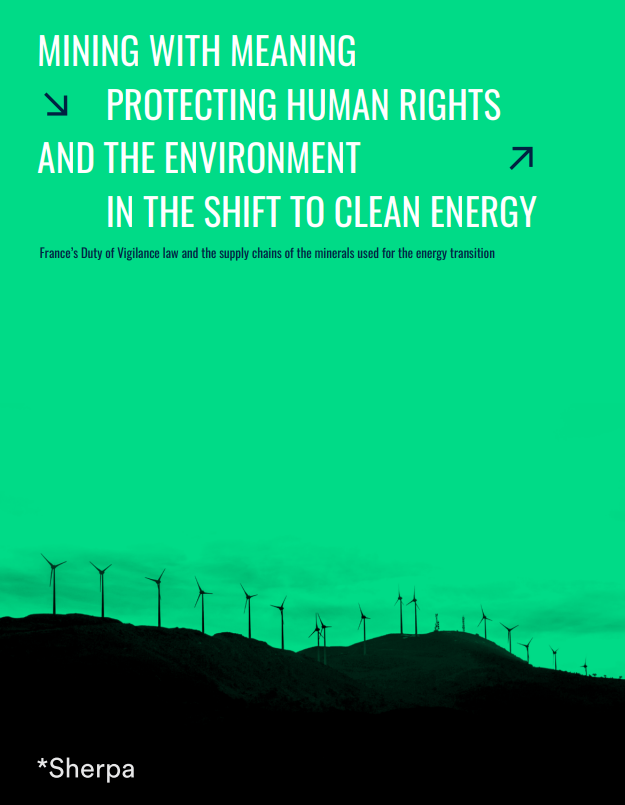Vigilance plans’ analysis
Vigilance in the supply chains of minerals used in the energy transition

Fighting global warming requires a reduction in greenhouse gas emissions to achieve the climate targets set in the Paris agreement. The agreement provides that the global temperature must not rise by more than 2°C above pre-industrial levels and limits the rise in temperature to 1.5°C.
The necessary changes to meet these objectives entail not only a reduction in energy consumption, but also the deployment of renewable energies and a new approach to mobility. However, the massive deployment of renewable energies and electric mobility implies the increasingly intensive production of solar panels, wind turbines, energy storage technologies, and grid connection cables. These technologies then require increasingly important supplies of certain minerals.
Yet the extraction and supply of these minerals can lead to environmental and human rights adverse impacts. The Business and Human Rights Resource Centre has documented on the Transition Minerals Tracker more than 160 cases of human rights and environmental allegations for the 37 largest companies involved in the extraction and use of minerals in the energy transition.
Methodology for Analyzing the Plans
The publication of a vigilance plan is not a sufficient condition to respect the Law on the duty of vigilance.
- First, the measures contained in the plan must meet certain legal requirements.
- Second, the companies concerned must effectively implement their vigilance plan.
Our study of vigilance plans focuses on this first point and thus aims to verify whether the vigilance plans drawn up and published do indeed contain reasonable vigilance measures.
We have analysed the vigilance plans on the basis of Sherpa’s Vigilance Plans Reference Guidance, which sets out our understanding of the Duty of Vigilance Law and provides a tool for the various stakeholders who wish to use it. Our analyses are also based on research into the minerals sector used in the energy transition and on consultation with partner organisations specialised in this sector.
Nine companies are considered in our study: they are subject to the Law on the duty of vigilance and their activities are related to the energy transition. More specifically, we looked at the vigilance plans of two companies involved in mineral extraction and the plans of seven companies developing renewable or decarbonated energy and using these minerals in their supply chain.
Results of our Study
Each of the nine companies underwent a detailed analysis of the vigilance measures set out in its vigilance plan. Each analysis includes a section on the measures specific to the drafting of the vigilance plan, and a section on the content of the vigilance measures relating to the extraction and use of minerals needed for the energy transition.
Detailed analyses of these nine vigilance plans are available on each company’s page.
Detailed analysis of the vigilance plan of:
Eramet Imerys Electricité de France (EDF) Engie Nexans Total S.A. Bolloré PSA Automobiles S.A. Renault
In addition, we have also carried out a study of the detailed analyses of the nine vigilance plans, in which we present the results of our analyses and our recommendations.